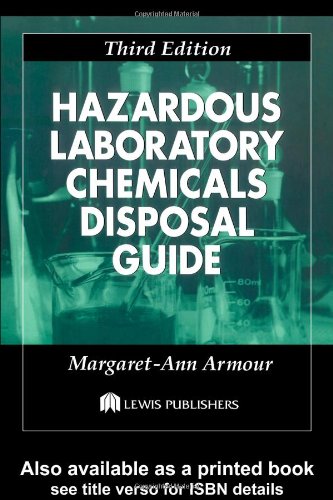

Most ebook files are in PDF format, so you can easily read them using various software such as Foxit Reader or directly on the Google Chrome browser.
Some ebook files are released by publishers in other formats such as .awz, .mobi, .epub, .fb2, etc. You may need to install specific software to read these formats on mobile/PC, such as Calibre.
Please read the tutorial at this link: https://ebookbell.com/faq
We offer FREE conversion to the popular formats you request; however, this may take some time. Therefore, right after payment, please email us, and we will try to provide the service as quickly as possible.
For some exceptional file formats or broken links (if any), please refrain from opening any disputes. Instead, email us first, and we will try to assist within a maximum of 6 hours.
EbookBell Team

0.0
0 reviewsThe latest version of a bestseller, Hazardous Laboratory Chemicals Disposal Guide, Third Edition includes individual entries for over 300 compounds. The extensive list of references has been updated and includes entries for 15 pesticides commonly used in greenhouses. Emphasis is placed on disposal methods that turn hazardous waste material into non-toxic products. These methods fall into several categories, including acid/base neutralization, oxidation or reduction, and precipitation of toxic ions as insoluble solids. The text also provides data on hazardous reactions of chemicals, assisting laboratory managers in developing a plan of action for emergencies such as the spill of any of the chemicals listed.